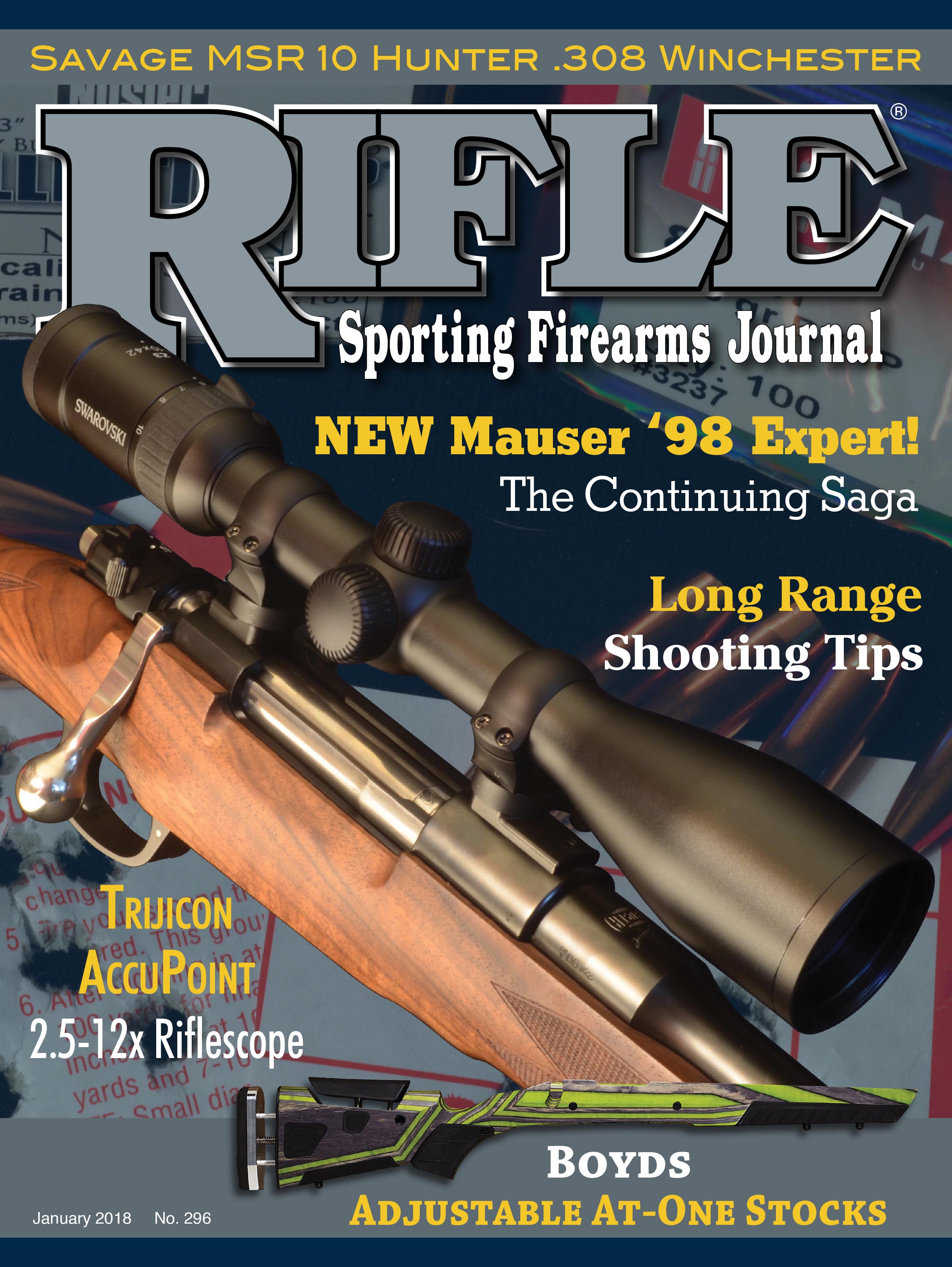Long Range Variables
How to Improve Your Field Shooting
feature By: Brian Pearce | January, 18
In my early days of shooting rifles at extended ranges, it was quickly discovered that ballistics charts and handloading manuals from ammunition companies were often incorrect – enough so that making reliable, vital hits on game was very difficult. In essence, they listed a given cartridge and load zeroed at a specified distance, which would drop an estimated number of inches at 300, 400 and 500 yards, etc. However, actual testing proved said charts were often inaccurate.
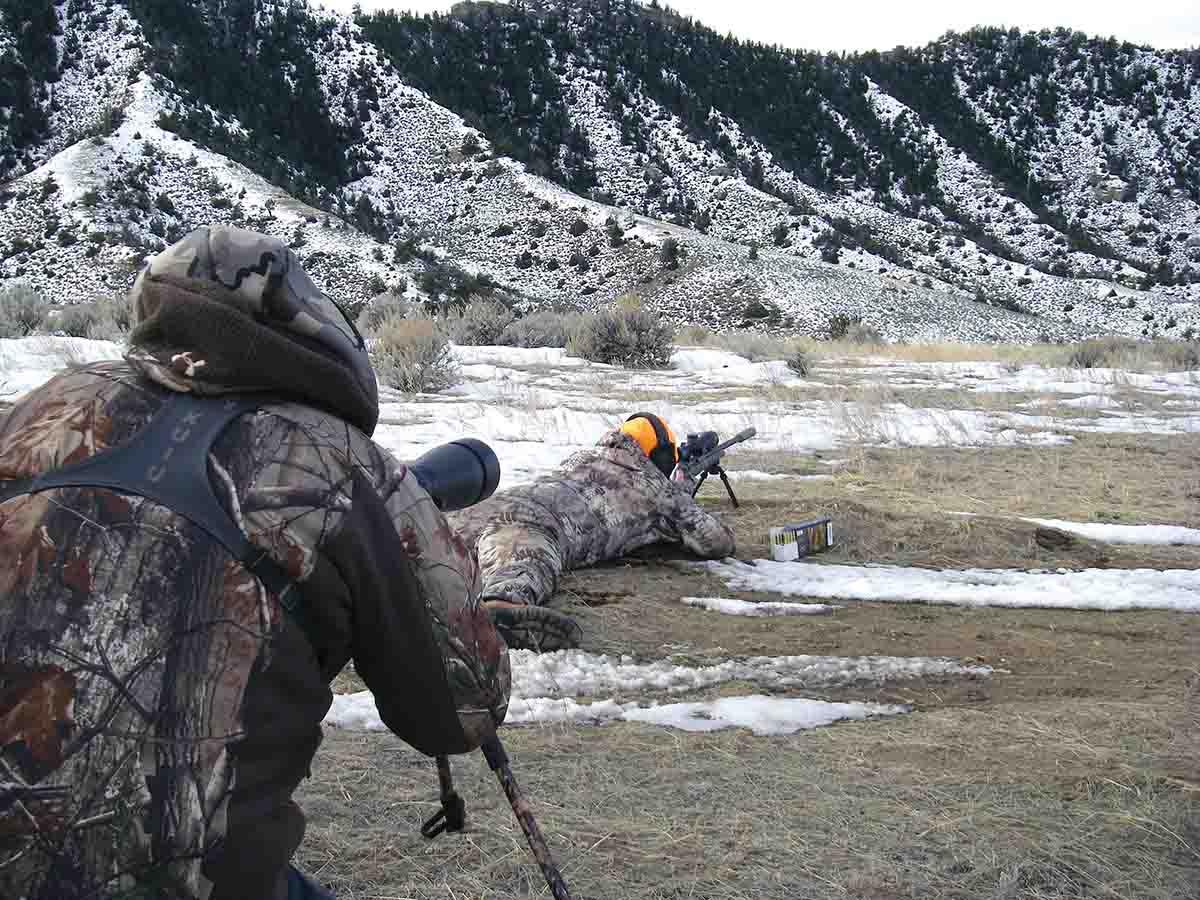
They also calculated for constant wind drift at extended ranges, something that is rarely encountered in the field as wind typically gusts and varies during the bullet’s flight. Forward-thinking scope companies, such as Redfield and Weaver, offered optics with reticle options to help with range estimation and hold-over, but again those were estimations rather than precision measurement devices. That has all changed.
Those ballistic charts have been replaced with advanced, highly accurate ballistic calculators that have been thoroughly tested using advanced software, Doppler radar and other precise measurement methods (rather than being calculated or estimated), and modern scopes are offered with a variety of reticle options; first focal planes, dials with zero stops and more. Advanced, low-drag hunting bullets have been designed to retain high velocities at extended distances while offering reliable expansion.
Rifle manufacturers also have significantly improved out-of-the-box accuracy, and most ammunition companies offer hunting loads that are more accurate than previous offerings. New cartridges have been introduced that are accurate and offer low extreme velocity spread variations and in some instances improved ballistics. Powder technology has been developed that provides consistent velocities when subjected to variations in temperature, humidity and elevation.
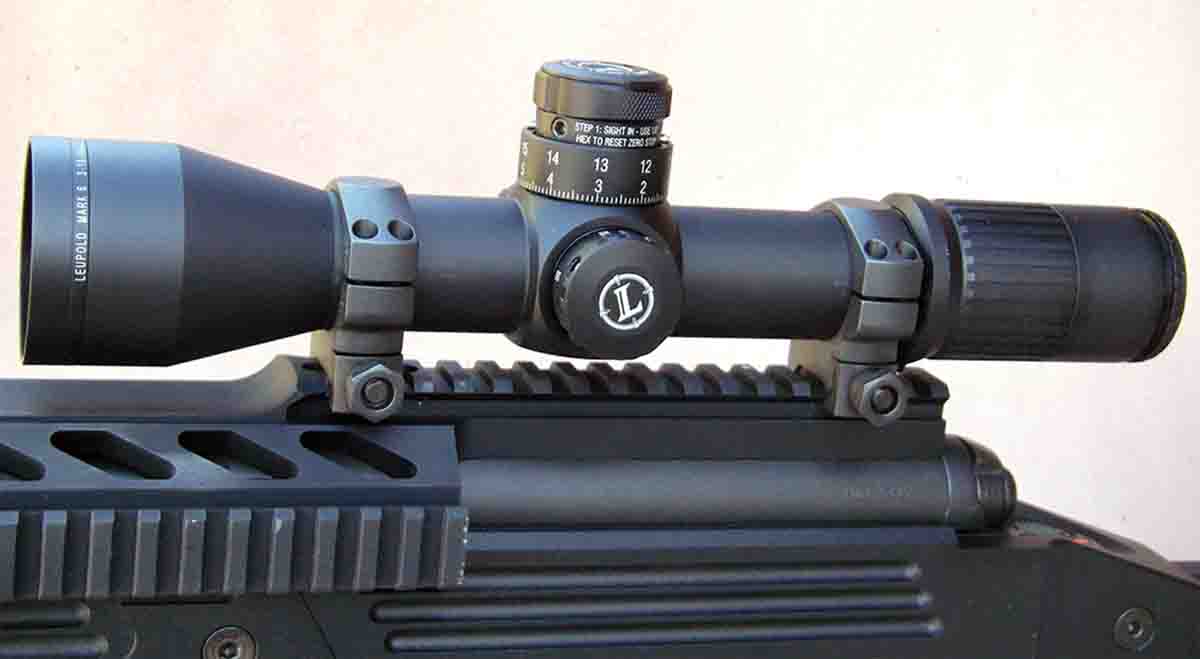
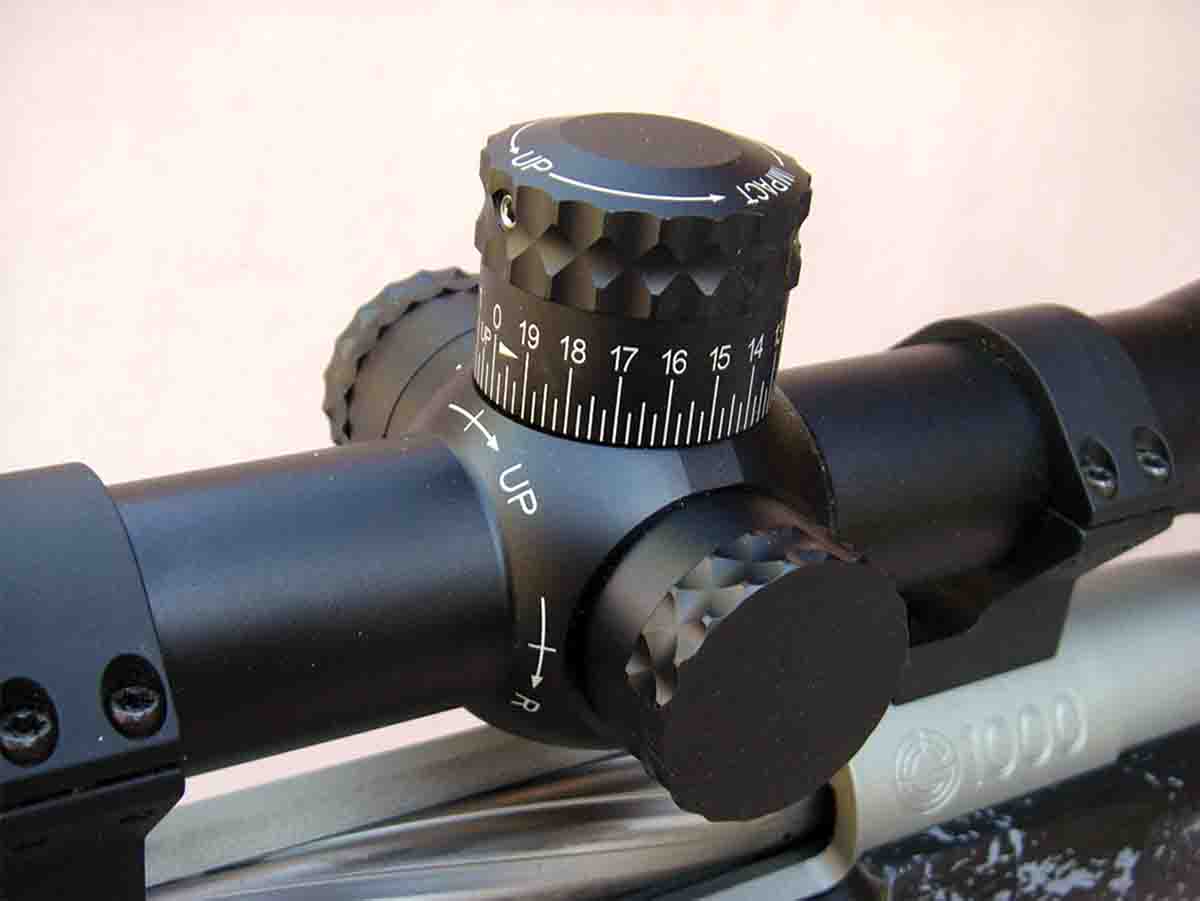
There are many other tools that help the hunter extend his effective range, but his needs are distinctly different than those of a long-range target shooter. Competitors know the distance to each target and will not need a rangefinder. They also usually have a spotter to help read the wind and coach as needed. Many target ranges feature flags positioned downrange to help identify wind speed at various distances. Perhaps most significant is that target shooters have the luxury of sighting in their rifle before shooting for score. It will not matter that they zeroed their rifle at home before traveling to a new range, knowing the rifle’s point of impact will almost always change.
By contrast, a hunter does not get practice shots but needs to place the first shot correctly, or game may be wounded or flee, making subsequent or “corrected” shots very difficult. Bullet impact changes are not usually significant at typical 100-yard, sight-in distances, but when shooting at extended ranges of 500 to 1,000 yards or beyond, it becomes especially critical to have the rifle and load perfectly zeroed to correspond with drop charts or ballistic calculators.
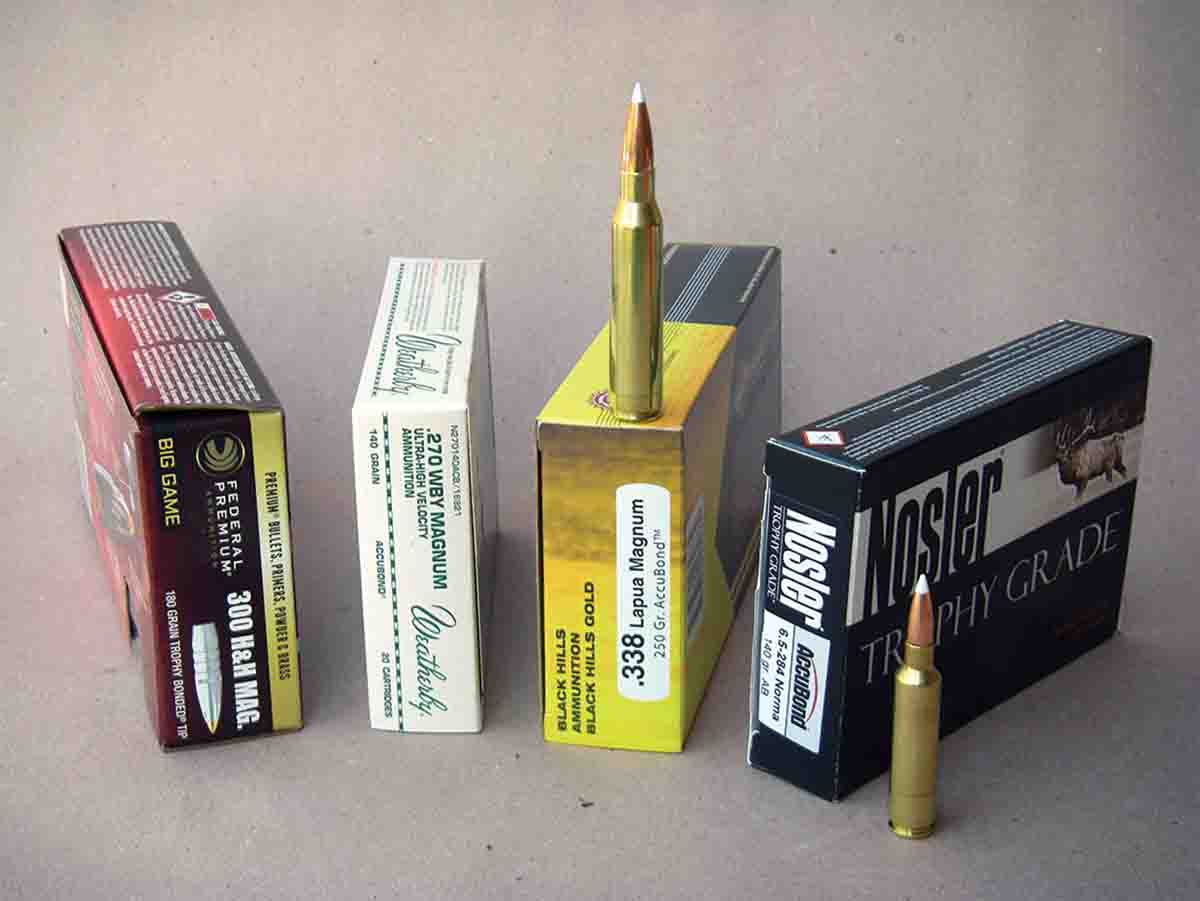
A load that has a 200-fps extreme spread, which is common with many traditional factory hunting loads, will change point of impact enough to completely miss the kill zone of deer at long range. A random example includes a bullet with a ballistic coefficient (BC) of .420 shot at a muzzle velocity of 2,900 fps. With a 200-fps extreme spread calculated at 2,800 and 3,000 fps, respectively, its change of impact at 400 yards is 4.8 inches; however, moving out to 700 yards (a distance that many dedicated long-range hunters discuss as though it is short range), the same load changes point of impact by 21.5 inches! At longer distances, changes in point of impact become significantly greater. By contrast, the same load with an extreme spread of 20 fps – common with quality ammunition – at 400 yards has an impact difference of just .5 inch, while at 700 yards it is just 2.2 inches. The importance of using ammunition with a narrow shot-to-shot velocity consistency is a critical ingredient for success.
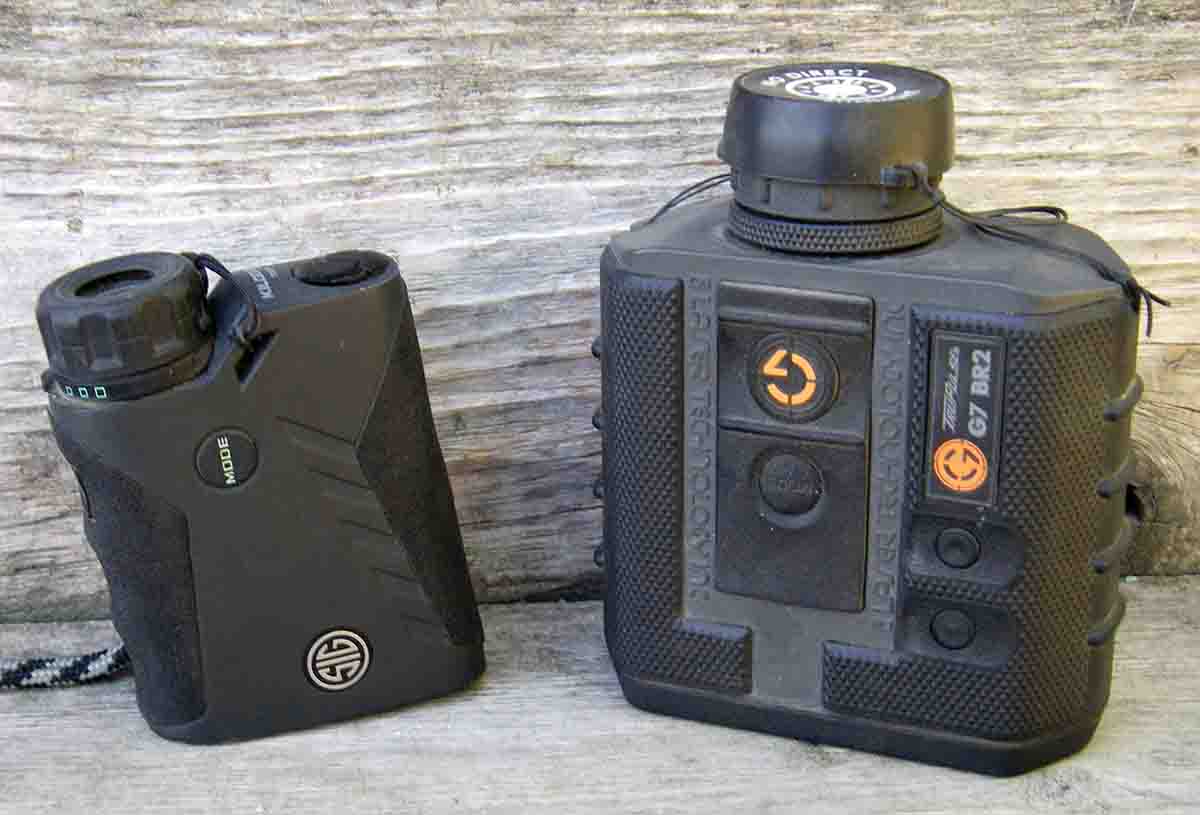
The development of practical “field” laser rangefinders has played a huge role in aiding long-range shooters by virtually eliminating guesswork. If the distance is not precisely determined, most likely the shot will miss. Using the above bullet with a .420 BC at a velocity of 2,900 fps, if the animal is at 400 yards but is incorrectly estimated at 350 yards, the bullet will strike 8.9 inches low; if the distance is estimated at 450 yards, the bullet will strike 10.8 inches high. Moving out to 700 yards, if the distance is estimated at 650 yards, the bullet will miss by 24.2 inches. If the range is miscalculated by 100 yards, the bullet misses by nearly 60 inches!
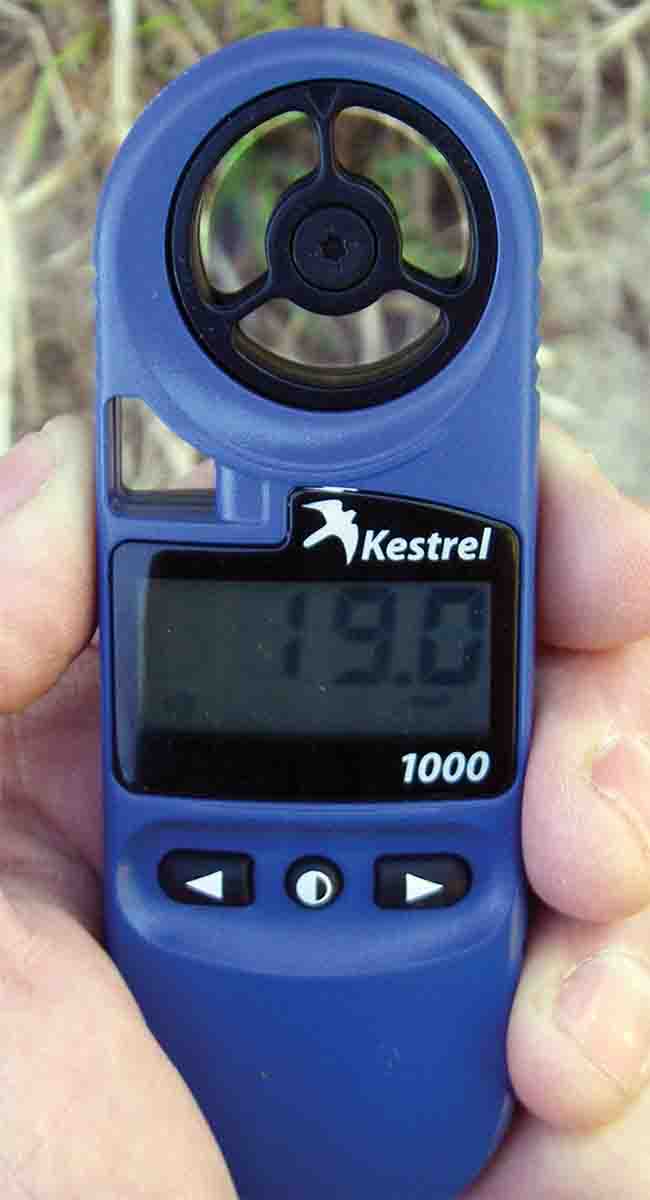
Not all rangefinders offer ideal performance. In trying dozens of models, they often fail to record a distance in snow-covered conditions and various other lighting conditions, and most are target-surface sensitive. I have been especially pleased with the Swarovski EL Range binocular; its built-in rangefinder gives accurate readings and compensates for uphill or downhill angles which change a bullet’s point of impact at long range.
There are several “pocket” rangefinders, such as the SIG Kilo 2000 7x25mm, that can regularly record distances out to 1,600 yards under a variety of field conditions. It is compact and weighs 7.5 ounces. Another interesting rangefinder is the Laser Technology Trupulse G7 BR2 marketed by Gunwerks. It can measure out to 2,500 yards under perfect conditions and offers a “corrected” yardage for atmospheric conditions.
Wind is an obvious factor that affects the bullet’s flight; however, an experienced and skilled long-range shooter can usually read the wind well enough to compensate and achieve respectable accuracy. This is a skill that must be learned, and tools will play an important role in developing that skill.
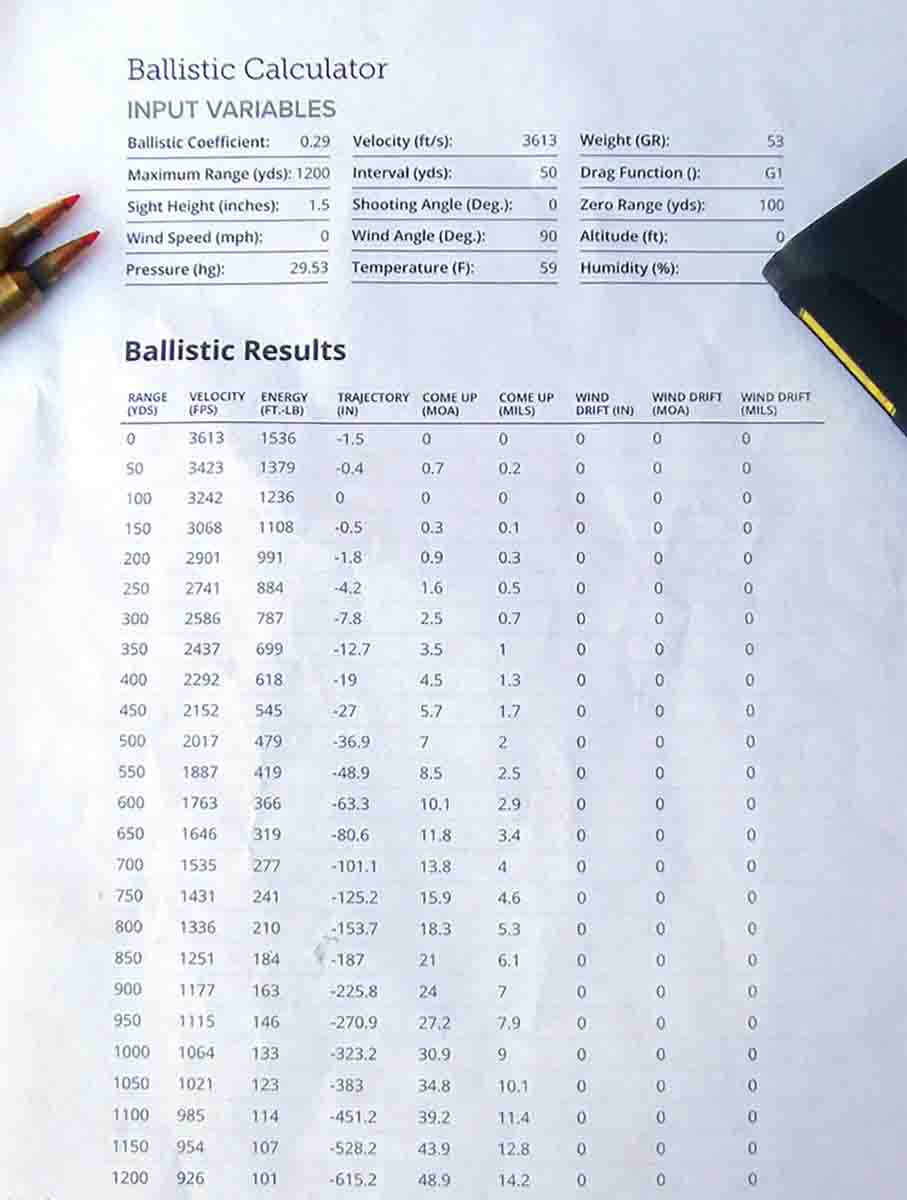
While downrange wind is always of interest, correctly reading wind currents in the first 300 yards is especially important. If the bullet gets blown off course in the first few hundred yards, its direction is more or less set for the remainder of its flight, and it becomes greatly magnified at longer ranges and almost always results in a miss unless the shooter makes proper compensation.
Most hunters sight in their rifles at home, or on a range near their home, then travel to a hunting location, which usually includes climate changes and other variables. At a typical 100-yard range, point-of-impact changes are usually minimal (although I have seen them change considerably). At longer distances that slight impact change will be magnified and should be corrected before attempting a long shot.
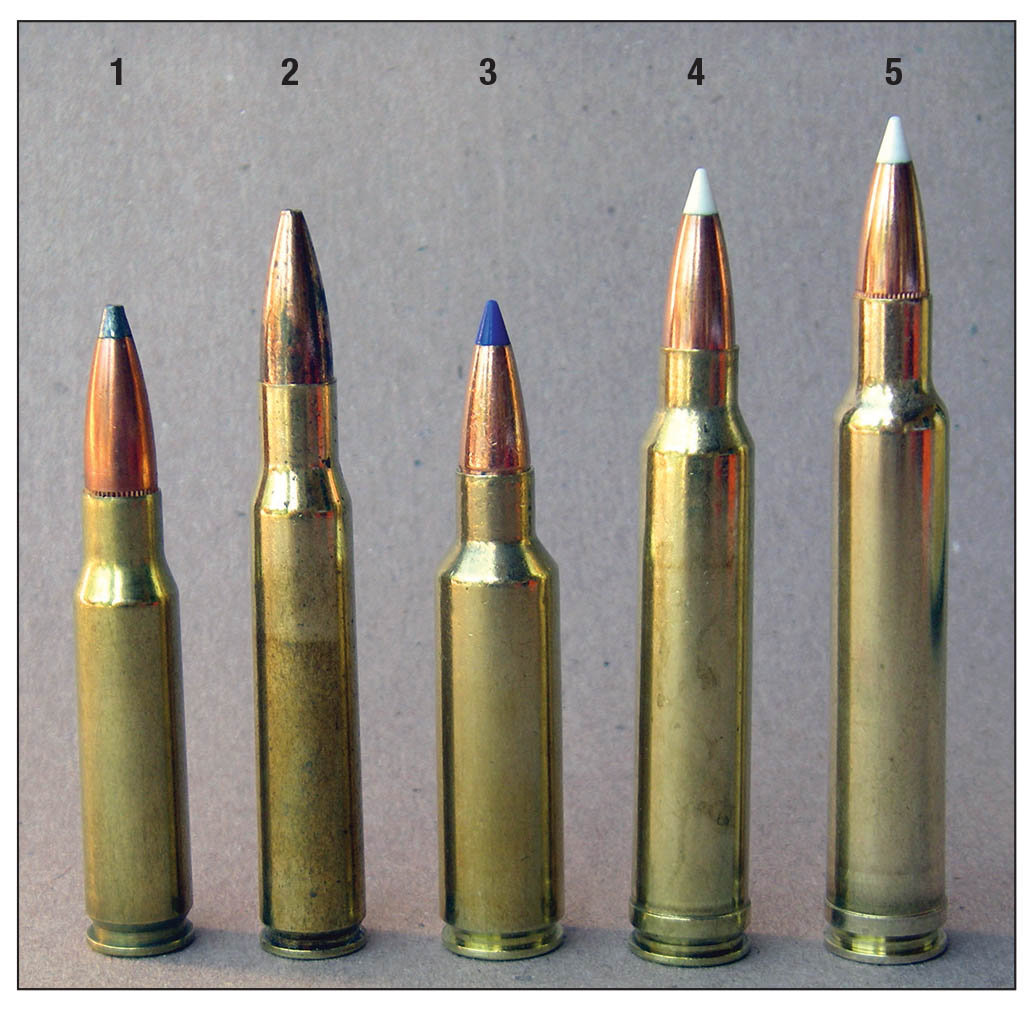
In spite of the rifle being correctly zeroed at hunting camp, changes in atmospheric pressure (air pressure), humidity, temperature and elevation often change a bullet’s flight, which is further magnified at long range. These conditions can be felt (aches and pains associated with air pressure changes) but usually are not seen or identified without tools. In other words, a hunter may know air pressure and humidity have changed but may have no idea how to compensate when the time comes to make a long-range shot.
My son was recently working up loads and dialing in a ballistics chart for a new Savage Model 10 .22-250 Remington for the rapidly approaching coyote season. His loads were regularly grouping inside .250 inch at 100 yards. Over a period of several days, bullet impact was tested at distances out to 750 yards. As is typical with Idaho’s fall weather, temperatures, humidity and air pressure were changing up and down daily. Without changing the scope’s zero, point of impact was shifting by 6 inches or more from day to day. Nothing else had changed except for air pressure, temperature and humidity. His handloads had an extreme velocity spread of less than 20 fps for a five-shot string, and velocity scarcely changed with day-to-day temperatures.
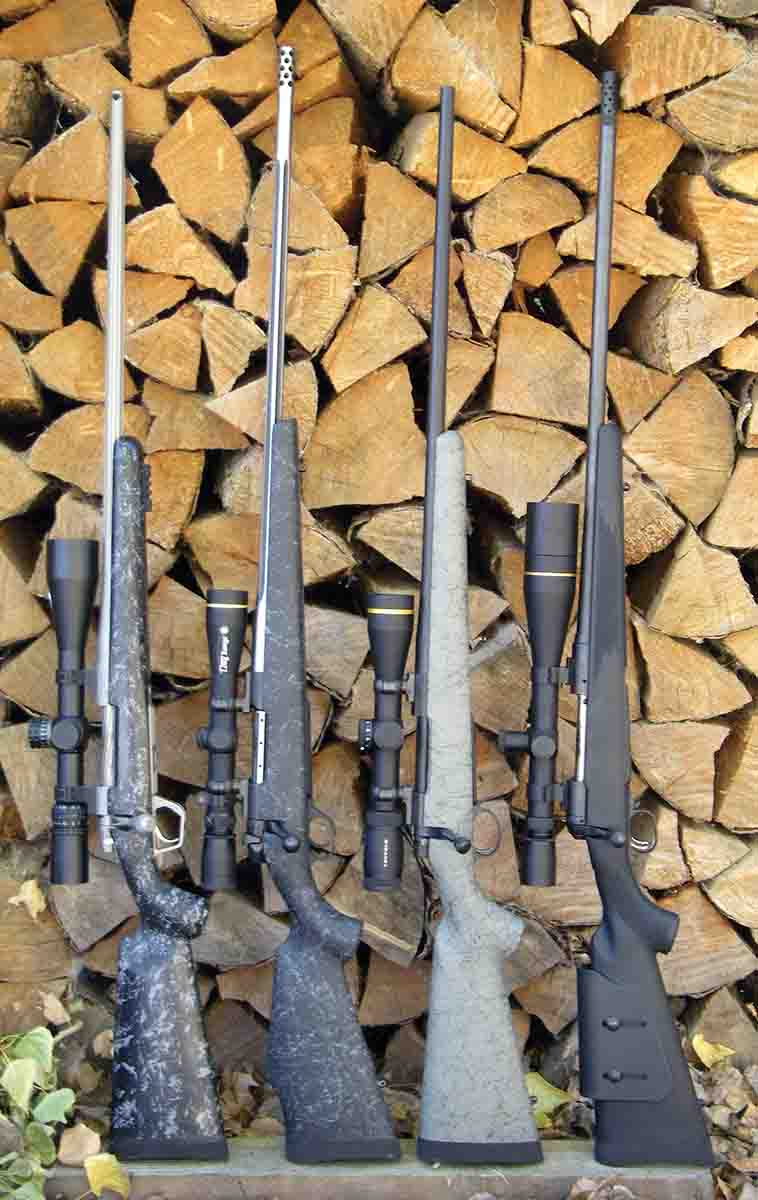
There are great pocket tools for measuring barometric pressure (which is essentially the same as atmospheric pressure, but depending on how they are used may have different connotations), altitude, density, relative humidity, temperature and crosswind all in a single device. I have been pleased with the performance and reliability of the Kestrel 5500, which usually sells for just over $300. At 4.3 ounces it is a practical and valuable field tool.
The earth’s rotation and its effect on bullet impact is something that is rarely spoken of, but it can be a significant factor. Recently, scientific tests were conducted wherein a given cartridge and bullet were fired exactly due east, then due west, at 1,000 yards. The point of impact changes were more or less 15 inches. In short, the earth rotates enough during a bullet’s flight to change point of impact, which becomes greater at longer distances. The problem is that this is not a predictable number. In other words, depending on location and the angle of the shot, the rotation amount will vary.
Long-range rifles should be superbly accurate and stocked so that changes in temperature and other variables will not change barrel pressure and therefore the point of impact. The stock should also be designed to be fired from a variety of field positions, including prone, sitting with a bipod or makeshift rest and so on. A quick-attach bipod is especially useful as it will serve as a positive rest. The barrel twist should be fast enough to fully stabilize bullets at any distance that a shot may be taken, and since most long-range bullets are heavy for caliber, a fast twist is generally favored. Precision shooting will naturally require a trigger pull that breaks crisply and without creep or after-travel.
Proper scope mounting is crucial. The number one reason most scopes are returned for repair is from overly tightened rings, which can bind adjustments and cause damage. Most specifications call for ring screws to be tightened to 28 inch-pounds. Scopes should also be mounted without stress and without binding in the rings. Lapping rings for a nearly perfect fit is almost always beneficial. Reticles must be precisely level with the rifle’s receiver, or as ranges increase the bullet will fail to travel true with the axis of the bore. An anti-cant level device mounted to the scope tube, such as those offered by Mounting Solutions Plus (www.mountsplus.com), is an important tool to prevent rifle canting that will surely result in a miss at long range.
Scope technology has advanced remarkably in the past couple of decades, especially for the long-range shooter. While scopes with second focal plane reticles can work very well, they do have certain disadvantages for many long-range shooting applications. A reticle located in the first focal plane will change the size of the target to correspond with the changing size of the reticle as the magnification selector is rotated. In other words, the target grows or shrinks simultaneously with the reticle as the magnification is changed. As a result, hold-over is exactly the same regardless of the power selected.
For several reasons, scopes with 30mm tubes are of significance to long-range shooters, but primarily they feature greater MOA adjustments when compared to scopes with one-inch tubes, allowing the rifle to be zeroed or dialed at extended ranges.
Reticle choices seem nearly endless and cannot be discussed in this space. However, there are many different types of bullet-drop compensators, and companies such as Leupold will custom manufacture any reasonable feature or reticle to exactly match the ballistics of a cartridge and load.
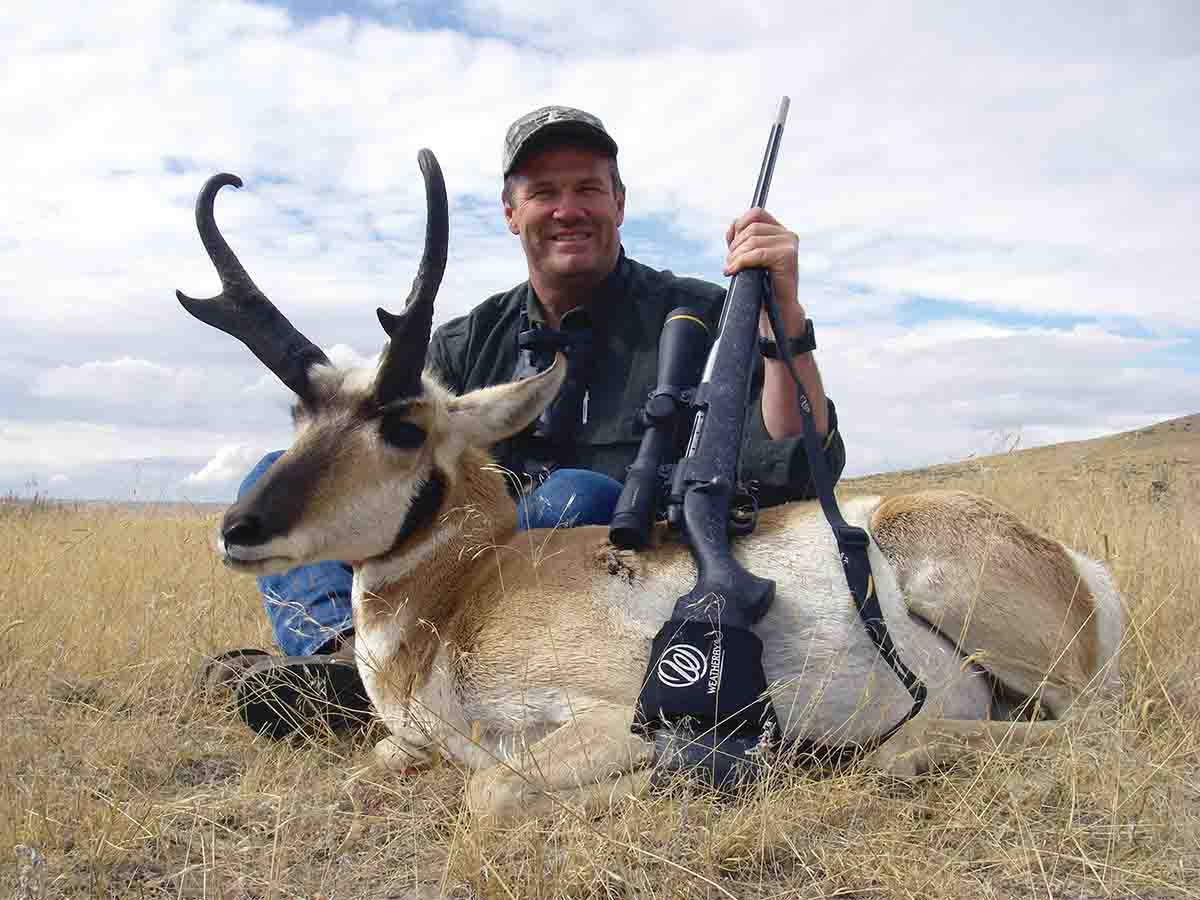
High-quality scopes feature positive click adjustments and are often fitted with finger adjustable turrets with zero stops, which has made dialing to compensate for trajectory and wind drift very popular. The advantage is that tools and equipment help the shooter determine how much to “dial” to compensate for range, wind drift, atmospheric conditions, etc., then place the crosshairs on the target and squeeze the trigger.
This method works well but there are a couple of drawbacks and potential risks. In the field there is not always time to take all of the compensation readings, then dial the scope and get back on target before the animal moves a few yards or the wind changes, both of which can result in a miss. It is generally not a good idea to take your eyes off the game to make scope adjustments. Although top-of-the-line scopes are near perfection with positive adjustments, I have had failures to fully adjust (or dial) until a shot had been taken.
Another great option is to place a ballistic chart with drop and wind drift calculations on the rifle and select a scope that has a reticle with known reference hashes or dots for instant hold-over and drift correction. This is a notably faster and practical aiming method for hunters.
There are literally dozens of excellent long-range hunting cartridges that offer adequate power and accuracy. Long-range hunting bullets have advanced considerably in the past couple of years, with special mention given to Hornady, Nosler, Berger, Swift and Barnes. The general focus has been to increase BC and reduce drag, which flattens trajectory, reduces wind drift, increases impact velocities and better facilitates reliable expansion.
Due to space limitations, many important details will have to be discussed in another issue. It must be mentioned that as a dedicated hunter and former guide, it is my nature to get as close as possible for a clean shot at game animals. However, with accurate rifles, precision scopes, greatly improved bullets and ammunition, and many tools to measure distance, wind and atmospheric conditions, it is easier to place bullets at extended distances than at any previous time. Still, hunters must practice extensively and learn their own limitations before taking any shot at any distance.


